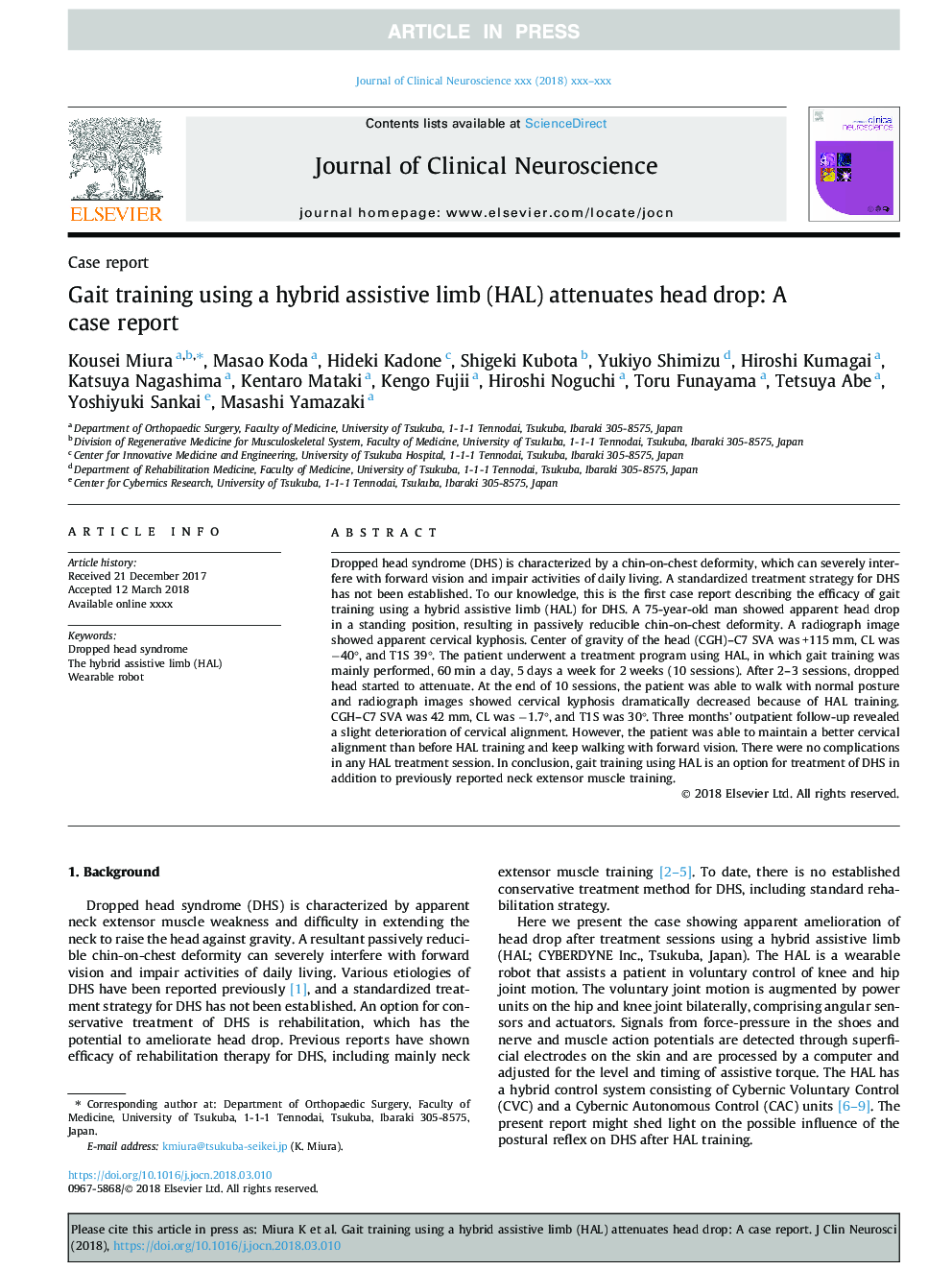| Article ID | Journal | Published Year | Pages | File Type |
|---|---|---|---|---|
| 8685055 | Journal of Clinical Neuroscience | 2018 | 5 Pages |
Abstract
Dropped head syndrome (DHS) is characterized by a chin-on-chest deformity, which can severely interfere with forward vision and impair activities of daily living. A standardized treatment strategy for DHS has not been established. To our knowledge, this is the first case report describing the efficacy of gait training using a hybrid assistive limb (HAL) for DHS. A 75-year-old man showed apparent head drop in a standing position, resulting in passively reducible chin-on-chest deformity. A radiograph image showed apparent cervical kyphosis. Center of gravity of the head (CGH)-C7 SVA wasâ¯+115â¯mm, CL was â40°, and T1S 39°. The patient underwent a treatment program using HAL, in which gait training was mainly performed, 60â¯min a day, 5â¯days a week for 2â¯weeks (10 sessions). After 2-3 sessions, dropped head started to attenuate. At the end of 10 sessions, the patient was able to walk with normal posture and radiograph images showed cervical kyphosis dramatically decreased because of HAL training. CGH-C7 SVA was 42â¯mm, CL was â1.7°, and T1S was 30°. Three months' outpatient follow-up revealed a slight deterioration of cervical alignment. However, the patient was able to maintain a better cervical alignment than before HAL training and keep walking with forward vision. There were no complications in any HAL treatment session. In conclusion, gait training using HAL is an option for treatment of DHS in addition to previously reported neck extensor muscle training.
Keywords
Related Topics
Life Sciences
Neuroscience
Neurology
Authors
Kousei Miura, Masao Koda, Hideki Kadone, Shigeki Kubota, Yukiyo Shimizu, Hiroshi Kumagai, Katsuya Nagashima, Kentaro Mataki, Kengo Fujii, Hiroshi Noguchi, Toru Funayama, Tetsuya Abe, Yoshiyuki Sankai, Masashi Yamazaki,
